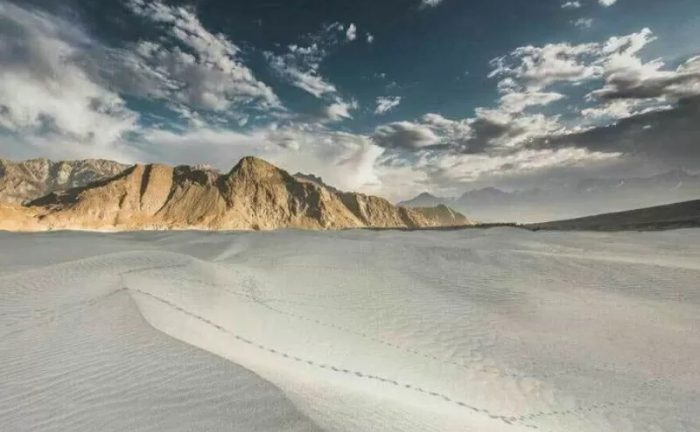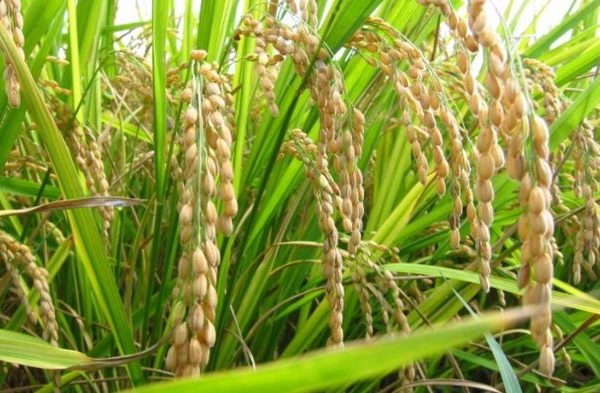Welcome to Pakistan, a land of diverse beauty! From the majestic mountain ranges to the picturesque tourist spots, the glistening sea coasts, and the captivating deserts, Pakistan offers a kaleidoscope of natural wonders. In this blog, we’ll delve into the mesmerizing deserts of Pakistan, each with its own distinctive features and allure. Comprising about 10% of the country’s landscape, these barren lands hold a unique charm that sets them apart from one another. Join us on this journey as we explore the sandy dunes, rocky terrains, and hidden treasures of Pakistan’s deserts. Uncover fascinating facts and stories that make these deserts an integral part of Pakistan’s diverse and enchanting landscape. Let’s embark on this adventure together and discover the wonders of Pakistan’s desert regions!
List of Most Famous Deserts in Pakistan
Thar Desert

The Thar Desert, also known as the Great Indian Desert, is the largest desert in Pakistan and one of the largest deserts on Earth. Covering an expansive area of 175,000 square kilometers, this remarkable desert stretches across both India and Pakistan. It holds the distinction of being the only subtropical desert in Asia, making it a unique and captivating natural wonder.
While 85% of the desert lies within the borders of India, the remaining portion in Pakistan is equally fascinating. What sets Thar Desert apart is its surprising population density. More than 30 million people inhabit this arid region, making it one of the most populated deserts worldwide. Despite the harsh climate and challenging living conditions, the desert is known for its accessibility and hospitable environment, earning it the nickname “the friendly desert of Pakistan.”
The people living in the Thar Desert follow diverse religious practices, with Islam and Hinduism being the predominant faiths. This cultural blend adds a colorful and vibrant aspect to the region, with various festivals and events celebrated throughout the year.
The inhabitants of Thar primarily lead a nomadic lifestyle, relying on animal farming and agriculture as their main sources of livelihood. The desert landscape, though seemingly harsh and barren, sustains a thriving community, offering a glimpse into the resilience and adaptability of the human spirit.
Thal Desert

Nestled in the province of Punjab, Pakistan lies the serene Thal Desert. Positioned near the picturesque Pothohar Plateau, this desert spans approximately 190 miles (306 km) in length and reaches a maximum breadth of 70 miles (113 km). Encircled by the northern Salt Range Piedmont to the north, the Indus River floodplains to the west, and the Jhelum and Chenab River floodplains to the east, Thal Desert is a captivating blend of unique geographical features.
Similar to the deserts of Cholistan and Thar, the Thal Desert is a subtropical sandy expanse with shifting and rolling sand dunes. The region experiences scanty rainfall, high diurnal temperature variations, and strong wind velocities, contributing to its arid nature. Despite these challenges, the desert sustains some vegetation, primarily consisting of perennial grasses.
Inhabitants of Thal Desert lead a lifestyle centered around agriculture and livestock rearing. Scattered in small settlements throughout the desert, the locals find sustenance and livelihood from these traditional practices. The peaceful ambiance and tranquil vistas make Thal Desert a hidden oasis in the province of Punjab, offering a unique escape into the serenity of the desert landscape.
Cholistan Desert

The Cholistan Desert, also known as the Rohi Desert among the locals, graces the southern region of Pakistan with its vast expanse of sands. The name “Cholistan” is derived from the Turkic word “chol,” meaning “sands,” and “istan,” a Persian suffix signifying “land of.” This desert covers an impressive area of 25,800 square kilometers (10,000 sq mi) in the Bahawalpur, Bahawalnagar, and Rahim Yar Khan districts of southern Punjab. The bustling city of Bahawalpur lies just 30 kilometers (19 mi) away from the desert’s edge, offering a gateway to this captivating land.
Stretching for approximately 480 kilometers in length, the Cholistan Desert’s width varies between 32 and 192 kilometers, making it a vast and diverse landscape to explore. The majority of the desert, 81%, is covered in mesmerizing sand dunes, adding to its mystique and allure. The remaining 19% is characterized by alluvial flats and small sandy dunes, contributing to the desert’s unique topography.
The Cholistan Desert is a land of timeless beauty, where the shifting sands and the ever-changing play of light create a mesmerizing spectacle. Despite its arid nature, the desert has sustained a rich cultural heritage and a way of life for the local communities who have adapted to its challenging environment.
Katpana Desert

Nestled in the northern region of Gilgit-Baltistan, Pakistan, the Katpana Desert, also known as the Cold Desert, stands as one of the country’s most marvelous desert landscapes. This unique desert earns its moniker “Cold Desert” due to its high altitude, offering a stark contrast to the conventional image of hot and arid deserts.
Situated at an impressive altitude of 7,303 feet (2,226 meters) above sea level, the Cold Desert is one of the highest deserts in Pakistan, adding to its allure. The enchanting desert area lies between Skardu and Shigar Valley, making it easily accessible for travelers, especially through the nearby airport.
What sets the Cold Desert apart is its captivating transformation during winters when the sand’s giant dunes are blanketed in a pristine layer of snow. This rare and awe-inspiring sight makes the Cold Desert a truly unique desert destination on the map of Pakistan.
Travelers visiting the Katpana Desert are greeted with a breathtaking landscape, where the interplay of sand dunes and snow-capped peaks creates an otherworldly experience. The desert’s charm lies in its magical contrast of warm sands and cool temperatures, offering a one-of-a-kind desert adventure that captivates the hearts of all who visit.
Kharan Desert

Nestled in the southwestern province of Balochistan, Pakistan, the Kharan Desert stands as a sandy and mountainous expanse with a rich historical significance. This captivating desert landscape bears witness to both ancient and modern events, making it a site of interest for history enthusiasts and explorers alike.
One of the most notable events in Kharan Desert’s history was Pakistan’s second nuclear test, known as Chagai-II, conducted on 30th May 1998. This historic moment marked a significant milestone in Pakistan’s nuclear program.
The rugged terrain of the Kharan Desert is not well-suited for agriculture, mainly due to the limited availability of irrigation. As a result, the predominant occupation in the region revolves around agriculture and farming, as the local communities adapt to the challenging environment.
Stretching across vast expanses, the Kharan Desert showcases a landscape dominated by dry, gray-brown sand, creating a unique and picturesque scene. The desert’s rugged beauty draws travelers and researchers who seek to immerse themselves in its unspoiled and enchanting ambiance.
The historical significance of the Kharan Desert is further amplified by its association with the legendary Alexander the Great. In the fourth century BC, after his triumphant conquest of King Porus in the region of India, Alexander embarked on a journey back to Babylonia. Passing through the Kharan Desert, he sought to measure his accomplishments against those of the great Cyrus the Great, who had once traversed this very desert.
Today, the Kharan Desert preserves its natural allure, while also serving as a reminder of the pivotal moments that have shaped Pakistan’s history and its connection to ancient civilizations. Travelers and history enthusiasts find solace in the vastness of the desert, retracing the footsteps of legendary figures and experiencing the rugged beauty of this historic landscape in Balochistan.





